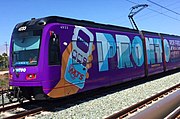Fare types
The Pronto card is valid on the San Diego Trolley, MTS buses, NCTD buses, Coaster, and Sprinter. Most services charge a flat fare, and are eligible for Best Fare, the fare capping system that credits the cost of individual rides towards a daily or monthly pass. Coaster uses zone-based fares, and is not eligible for Best Fare. [2]
Reduced fares are available via a reduced-fare Pronto card for individuals with disabilities, seniors over the age of 65, and Medicare recipients. Reduced-fare Pronto cards with a photo of the user are available from transit agency offices, and standard Pronto cards can also be converted to reduced-fare status by applying online or in person. [3] [4]
Children ages 6 to 18 are also eligible for reduced fares. In a pilot program running from May 2022 to June 2026, youth riders are eligible for free fares with a youth Pronto card. [5]
History
Planning and Installation
In 2018, the San Diego Metropolitan Transit System launched Elevate San Diego, a public participation plan that will address the needs for the growing population, and eventually invoke Assembly Bill 805, and increase the half-cent sales tax within MTS jurisdiction via ballot proposition. It has been postponed indefinitely due to the pandemic. [6]
In January 2019, MTS awarded INIT Systems the contract to install and operate the new system. [7]
Installation began in February 2021 on MTS vehicles. The first machine was installed at the San Diego Convention Center on February 8, with further machines and validators being installed at NCTD and MTS transit stations in the following months. [8]
Transition
On April 16, 2021, the SANDAG Transportation Committee voted to approve the system. On June 17, the MTS Board adopted a transition plan, and announced the system will launch on September 1, when proposed fare hikes take effect. [9]
The transition began in August 2021, when cards became available for purchase. [10] On August 15, registration began, and the app was released to smartphones. The system came online at midnight on September 1. Cards issued during the transition period were pre-loaded with a monthly pass, which activated upon launch of the system.
As the primary agency of the system, MTS assumed user support responsibilities, including the chat and call centers, which are called the Pronto Support Team.
Technology
The Pronto system is an account-based system, which stores information about a card's balance and passes in a central database. This is in contrast to the previous Compass Card system, where information about balance and passes was stored on the card itself. Card readers on buses and at train stations are linked to the central database in real time, which means that passes and stored value purchased online are available immediately. The Pronto system is based on the MOBILEvario fare collection system, a commercial off-the-shelf product provided by Karlsruhe-based technology firm INIT. [1] [7]
Reduced-fare Pronto cards are available for eligible passengers. The reduced-fare status of the card is stored in the central database, and passengers who are eligible for reduced or free fares are able to convert their standard Pronto card to a reduced-fare card by completing an application online or in person at select locations. [3]
Another benefit of the account-based architecture is that it enables new fare types that benefit riders. With the launch of the Pronto card, MTS and NCTD enabled fare capping on bus and light rail services, branded as "Best Fare." Pronto card users are able to purchase monthly passes in advance, and they are also able to earn a daily or monthly pass by paying single fares. [2]

SmarTrip is a contactless stored-value smart card payment system managed by the Washington Metropolitan Area Transit Authority (WMATA). The Maryland Transit Administration (MTA) uses a compatible payment system called CharmCard. A reciprocity agreement between the MTA and WMATA allows either card to be used for travel on any of the participating transit systems in the Baltimore-Washington metropolitan area. Unlike traditional paper farecards or bus passes, SmarTrip/CharmCard is designed to be permanent and reloadable; the term "SmarTrip" may refer to both payment systems unless otherwise noted.
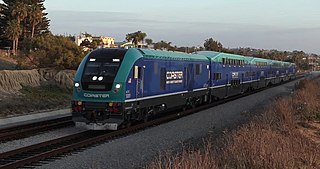
Coaster is a commuter rail service in the central and northern coastal regions of San Diego County, California, United States, operated by the North County Transit District (NCTD).

The San Diego Trolley is a light rail system serving San Diego County, California, United States. The trolley's operator, San Diego Trolley, Inc., is a subsidiary of the San Diego Metropolitan Transit System (MTS). The trolley operates as a critical component of MTS, with connections to and integrated travel tickets with the local bus systems.

The Clipper card is a reloadable contactless smart card used for automated fare collection in the San Francisco Bay Area. First introduced as TransLink in 2002 by the Metropolitan Transportation Commission (MTC) as a pilot program, it was rebranded in its current form on June 16, 2010. Like other transit smart cards such as the Oyster card, the Clipper card is a credit card-sized stored-value card capable of holding both cash value and transit passes for the participating transit agencies. In addition to the traditional plastic card, Clipper is available as a virtual card in Google Wallet and Apple Wallet. Clipper is accepted by nearly all public transit services in the Bay Area, including but not limited to Muni, BART, Caltrain, AC Transit, SamTrans, Golden Gate Transit, Golden Gate Ferry, San Francisco Bay Ferry, and VTA.
The San Diego Association of Governments (SANDAG) is the metropolitan planning organization (MPO) for San Diego County, California. It is an association of local county governments, with policy makers consisting of mayors, councilmembers, and county supervisors, and also has capital planning and fare setting powers for the county's transit systems, the San Diego Metropolitan Transit System (MTS) and the North County Transit District (NCTD), some of which was assumed by the Metropolitan Transit Development Board. SANDAG, along with the Southern California Association of Governments, are the only metropolitan planning agencies in Southern California.
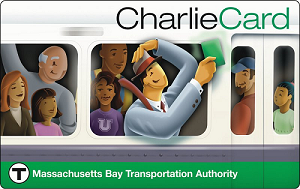
The CharlieCard is a contactless smart card used for fare payment for transportation in the Boston area. It is the primary payment method for the Massachusetts Bay Transportation Authority (MBTA) and several regional public transport systems in the U.S. state of Massachusetts. It is used on the MBTA's subway and bus services, but is not currently accepted on the MBTA Commuter Rail and ferries.

The Compass Card was the first-generation smart card used for automated fare collection on public transport services within San Diego County, California. Administered by the San Diego Association of Governments (SANDAG), it was valid on a number of different travel systems in San Diego County including MTS buses, the San Diego Trolley, North County Buses, the Coaster and the Sprinter. The system was operated by Cubic Transportation Systems. Phased out over the third quarter of 2021, it was discontinued on August 31, and its successor, Pronto, launched the following day.

Sprinter is a hybrid rail service operating in the North County area of San Diego County between the cities of Escondido and Oceanside, California, United States. The service uses the 22-mile (35 km) Escondido Subdivision of the San Diego Northern Railroad. Station platforms were constructed for the line's fifteen stations serving the cities of Oceanside, Vista, San Marcos, and Escondido. The line provides service to California State University, San Marcos and Palomar College. Sprinter service operates every 30 minutes and is targeted towards students and commuters.
The North County Transit District (NCTD) is the agency responsible for public transportation in Northern San Diego County, California. The agency manages the COASTER commuter rail service between Oceanside and San Diego, the SPRINTER hybrid rail service between Escondido and Oceanside, the BREEZE transit bus service, LIFT paratransit service, and FLEX on-demand and point-deviation service.

The following is a list of transportation options in San Diego County, California.

The San Diego Metropolitan Transit System is a public transit service provider for San Diego County, California. The agency operates a transit system that includes the San Diego MTS bus system, San Diego Trolley, and Rapid. MTS also controls the San Diego and Arizona Eastern (SD&AE) freight railway and regulates taxicabs, jitneys, and other private for-hire passenger transportation services.

The ORCA card is a contactless, stored-value smart card system for public transit in the Puget Sound region of Washington, United States. The card is valid on most transit systems in the Seattle metropolitan area, including Sound Transit, local bus agencies, Washington State Ferries, the King County Water Taxi, and Kitsap Fast Ferries. It was launched in 2009 and is managed by the Central Puget Sound Regional Fare Coordination Project, a board composed of local transit agencies.

A transit pass or travel card, often referred to as a bus pass or train pass etc., is a ticket that allows a passenger of the service to take either a certain number of pre-purchased trips or unlimited trips within a fixed period of time.

The Transit Access Pass (TAP) is a contactless smart card used for automated fare collection on most public transport agencies within Los Angeles County, California. The card is also available in electronic form, free of charge, in Apple Wallet, thereby bypassing the need to purchase the plastic USD $2 card. It is administered by the Los Angeles County Metropolitan Transportation Authority (Metro), and the card and fare collection systems are manufactured by Cubic Transportation Systems.
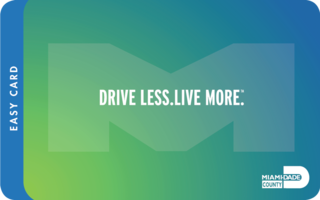
The Easy Card is a contactless smartcard system for public transit fares in the Miami metropolitan area. The Easy Card is valid on Metrobus and Metrorail services in Miami-Dade County, and on Tri-Rail services throughout the region. Easy Card payments were introduced in 2009 on Miami-Dade Transit services, and expanded to Tri-Rail in 2011. The card functions as a stored-value card, and can also be loaded with unlimited-ride passes. Reduced-fare and zero-fare versions of the Easy Card are available for eligible customers, including seniors and individuals with disabilities.
A reduced fare program refers to special programs providing particular passengers with a discounted fare option for travel on a public transport system. In the United States, public transportation systems that receive federal funding are required to offer, at minimum, half fares to the elderly and handicapped persons during off peak travel. Some transportation systems also extend reduced fare options to youth, students, military personnel, and low-income passengers.

Rapid is a bus rapid transit system operating in San Diego County, California. It is part of the San Diego Metropolitan Transit System (MTS). The system mainly operates on the HOV lanes of Interstate 15 and 805. Freeway-level stations are located in the medians of Interstate 15, Park Boulevard, and East Palomar Street.
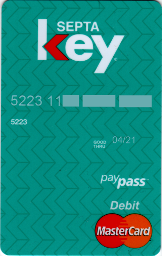
The SEPTA Key card is a smart card that is used for automated fare collection on the SEPTA public transportation network in the Philadelphia metropolitan area. It can be used throughout SEPTA's transit system, including buses and SEPTA Metro, and on Regional Rail.

The HOLO card is a contactless smart card used to pay for public transit fares on the island of Oʻahu in Hawaiʻi. The card is used to hold cash value or passes for use on TheBus and the Skyline rail system. The card is used by tapping it on a reader terminal when boarding TheBus or at a Skyline faregate. Cards can be loaded online at the HOLO card's website, over the phone, or in person at various retail locations.

Fare capping is a feature of public transport fare collection systems. In its most common form, fare capping credits the cost of individual transport fares towards the cost of an unlimited pass.




